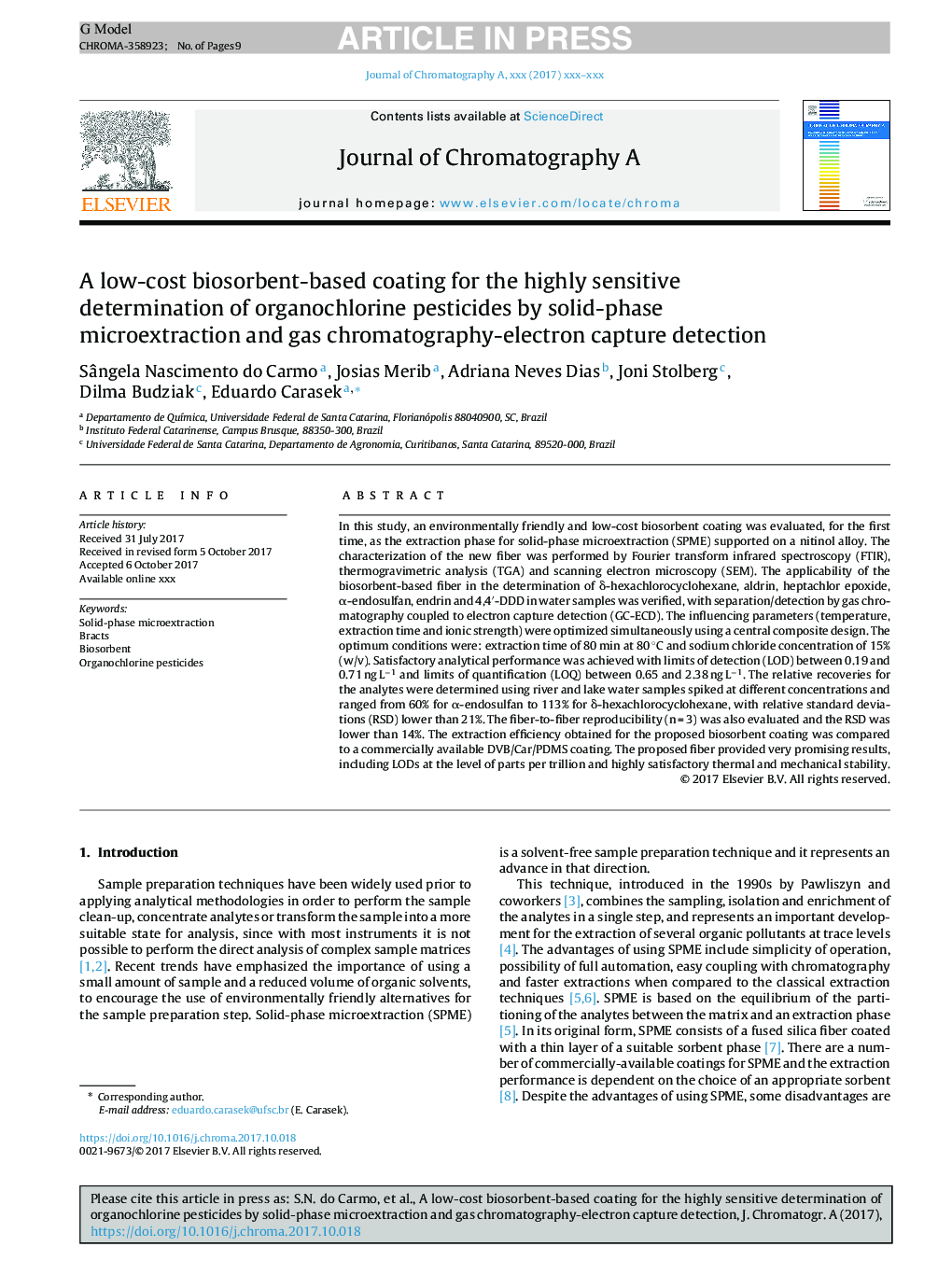| Article ID | Journal | Published Year | Pages | File Type |
|---|---|---|---|---|
| 7609568 | Journal of Chromatography A | 2017 | 9 Pages |
Abstract
In this study, an environmentally friendly and low-cost biosorbent coating was evaluated, for the first time, as the extraction phase for solid-phase microextraction (SPME) supported on a nitinol alloy. The characterization of the new fiber was performed by Fourier transform infrared spectroscopy (FTIR), thermogravimetric analysis (TGA) and scanning electron microscopy (SEM). The applicability of the biosorbent-based fiber in the determination of δ-hexachlorocyclohexane, aldrin, heptachlor epoxide, α-endosulfan, endrin and 4,4â²-DDD in water samples was verified, with separation/detection by gas chromatography coupled to electron capture detection (GC-ECD). The influencing parameters (temperature, extraction time and ionic strength) were optimized simultaneously using a central composite design. The optimum conditions were: extraction time of 80 min at 80 °C and sodium chloride concentration of 15% (w/v). Satisfactory analytical performance was achieved with limits of detection (LOD) between 0.19 and 0.71 ng Lâ1 and limits of quantification (LOQ) between 0.65 and 2.38 ng Lâ1. The relative recoveries for the analytes were determined using river and lake water samples spiked at different concentrations and ranged from 60% for α-endosulfan to 113% for δ-hexachlorocyclohexane, with relative standard deviations (RSD) lower than 21%. The fiber-to-fiber reproducibility (n = 3) was also evaluated and the RSD was lower than 14%. The extraction efficiency obtained for the proposed biosorbent coating was compared to a commercially available DVB/Car/PDMS coating. The proposed fiber provided very promising results, including LODs at the level of parts per trillion and highly satisfactory thermal and mechanical stability.
Related Topics
Physical Sciences and Engineering
Chemistry
Analytical Chemistry
Authors
Sângela Nascimento do Carmo, Josias Merib, Adriana Neves Dias, Joni Stolberg, Dilma Budziak, Eduardo Carasek,
